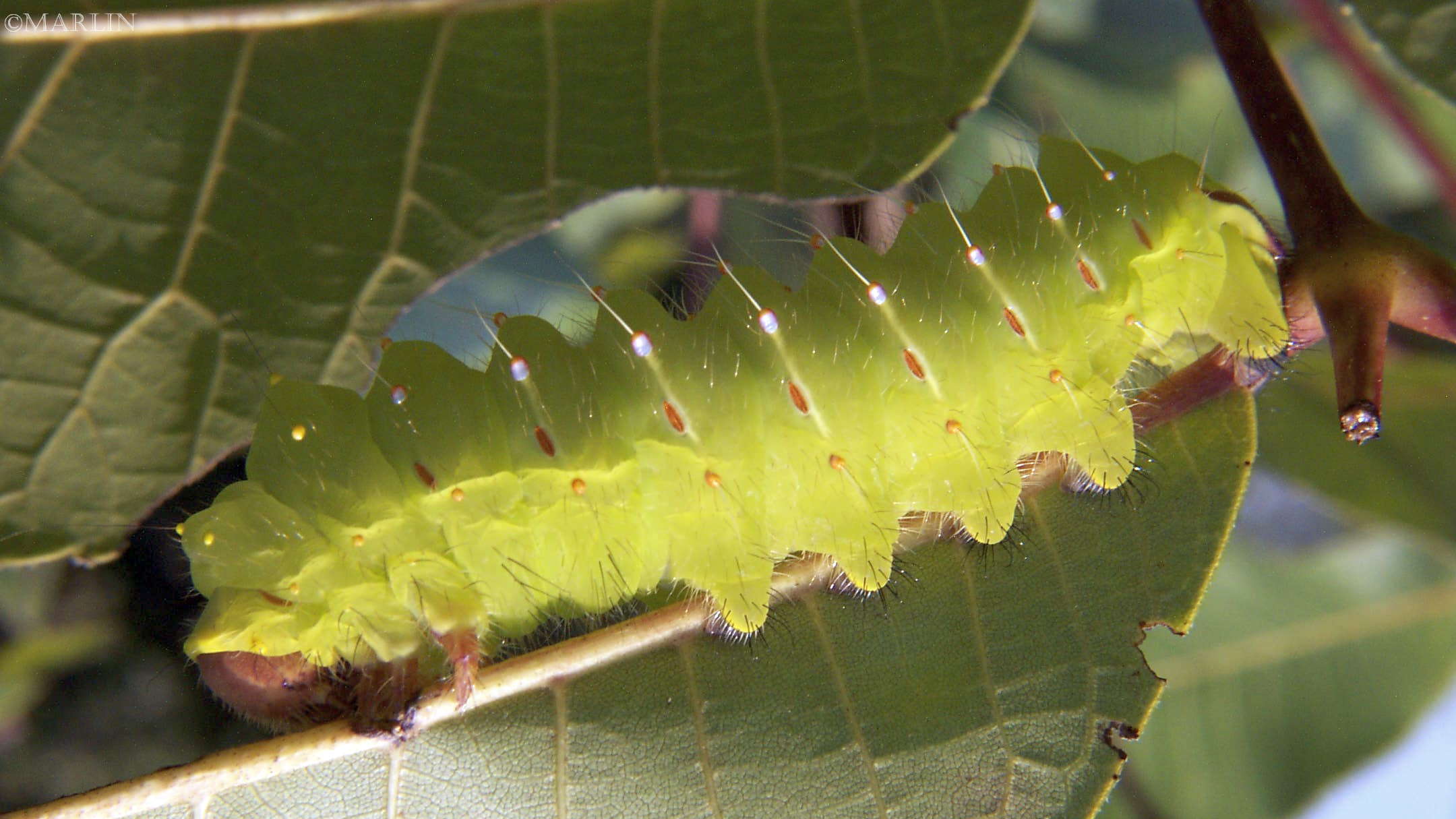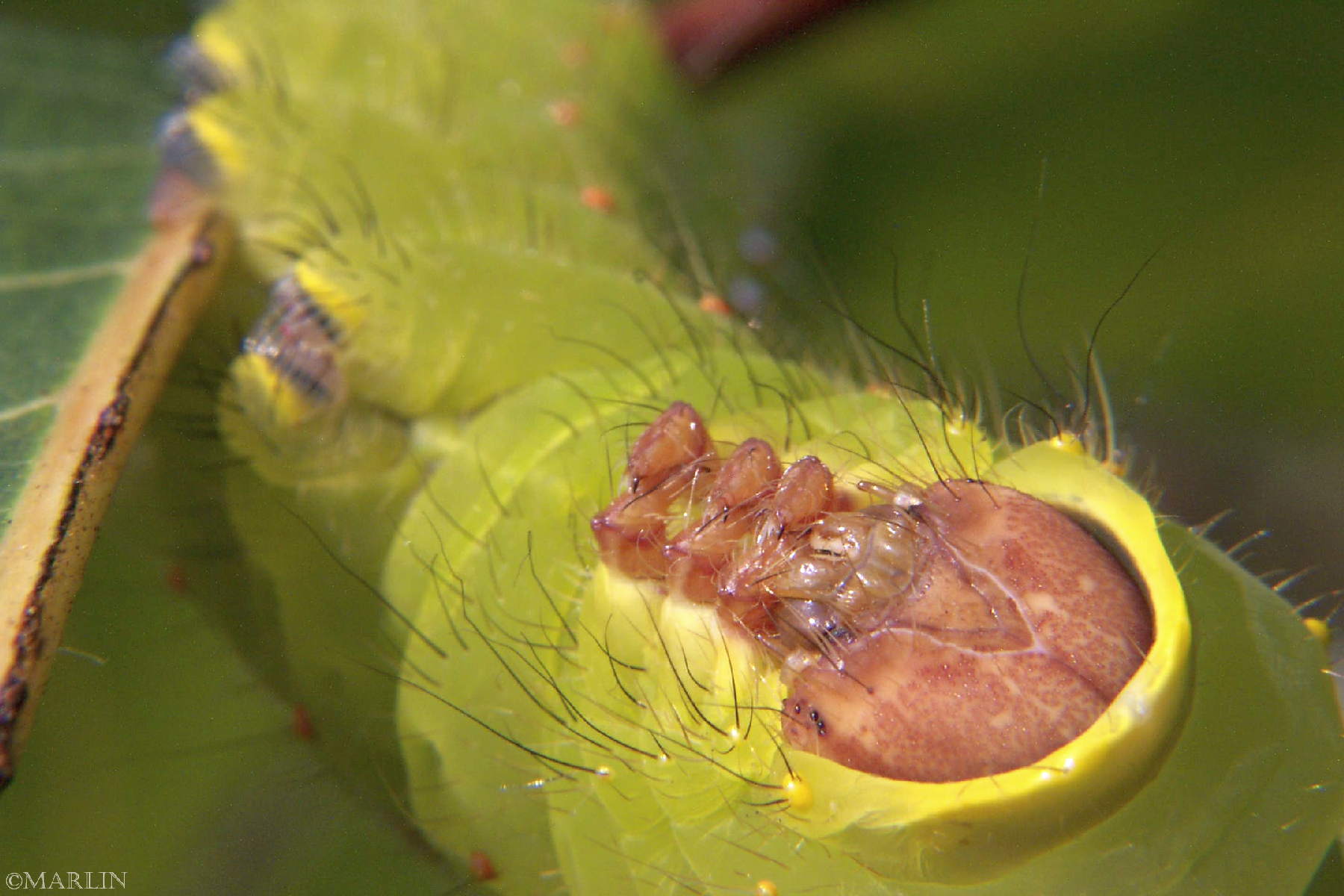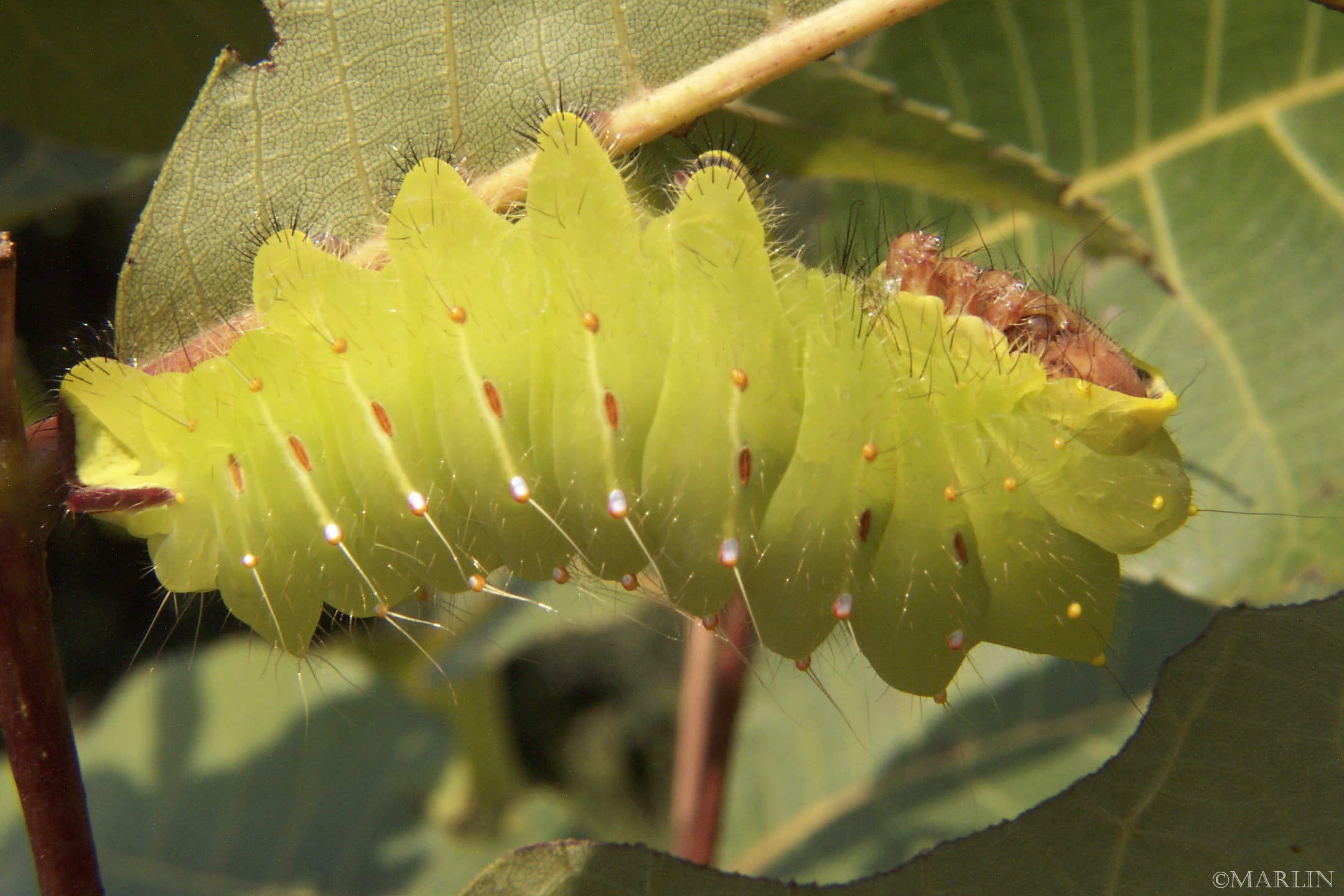Polyphemus Moth Caterpillar – Antheraea polyphemus
Family: Saturniidae – Giant silkmoths / Subfamily: Saturniinae / Tribe: Saturniini
Live adult moths and caterpillars photographed at DuPage County, Illinois, USA.
Business end of an efficient foliage feeder (above). They eat an entire leaf, then cut the petiole so birds don’t see where they are feeding
When the moth eggs hatch, greenish-yellow caterpillars emerge. As the caterpillars age, they molt 5 times. Each instar is slightly different, but on their sixth and final instar they become a bright green color, with silver spots on their side. They feed heavily on their host plant and can grow up to 3-4 inches long. They then spin cocoons of brown silk, usually wrapped in leaves of the host plant. There are generally two broods throughout the United States, one that hatches in early spring and one that hatches in late summer.
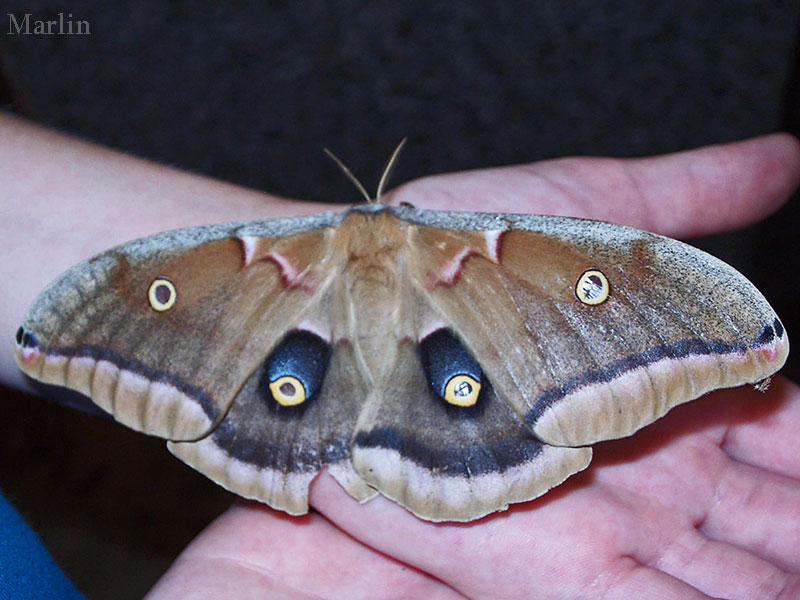
My son and I found this giant Polyphemus silkmoth bumping against the lights outside our local 7-11 store. Naturally, it was confused and stunned itself several times during collisions with plate-glass windows; we carried it to a dark area and successfully released it into the night.
This moth gets its name from the large eyespots on its hindwings, referring to Polyphemus, the Cyclops of Greek mythology, who captured (and was eventually blinded by) Odysseus in Homer’s epic poem, The Odyssey.
Polyphemus moth adults, like others in the Saturniidae family, do not feed. Silkmoths use pheromones to locate each other when seeking mates. The life cycle of the moth is much like any other saturniidae species.
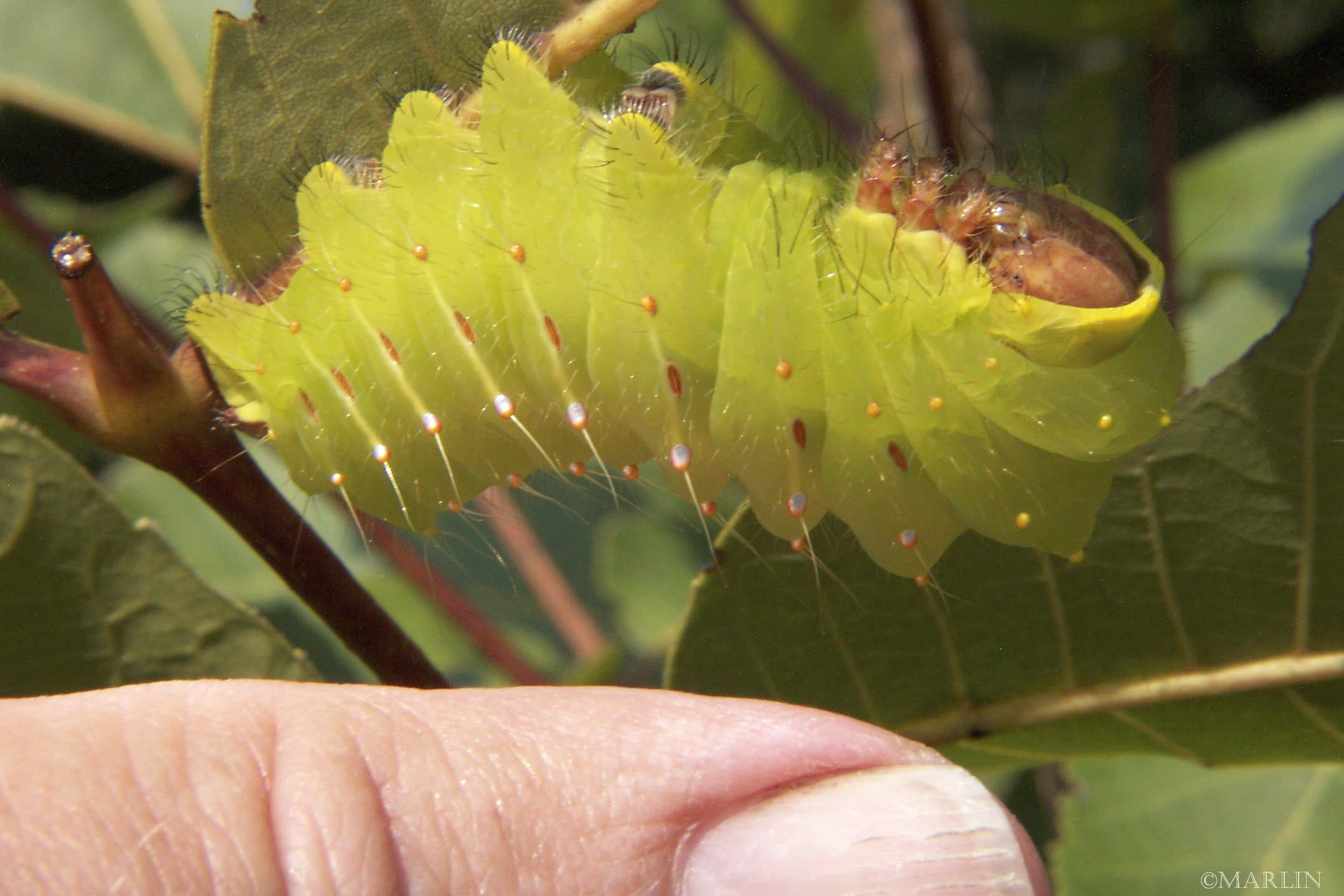
The moths eclose and then must pump their wings with fluid (hemolymph) to extend them. The females emit pheromones, which the male can detect through its large, plumose antennae. Males can fly for miles in order to reach a female. After the moths mate, the female spends the majority of the remainder of her life laying eggs, while the male may mate several more times. Adults of this family of moths have vestigal mouths; they do not eat and only live as adults for less than one week.
Order Lepidoptera: Moths, unlike the butterflies, are usually nocturnal. Many moths and their caterpillars are major agricultural pests in large parts of the world. Moths in the family Tineidae are commonly regarded as pests because their larvae eat fabrics, clothes and blankets made from natural fibers such as wool or silk. Moths in the genus Farinalis feed on stored grain, flour, corn meal and other milled grain products.
Moths Index | Moths | Butterflies Main | Butterflies Index | Skippers
Tree Encyclopedia / North American Insects & Spiders is dedicated to providing family-friendly educational
resources for our friends around the world through large images and macro photographs of flora and fauna.

